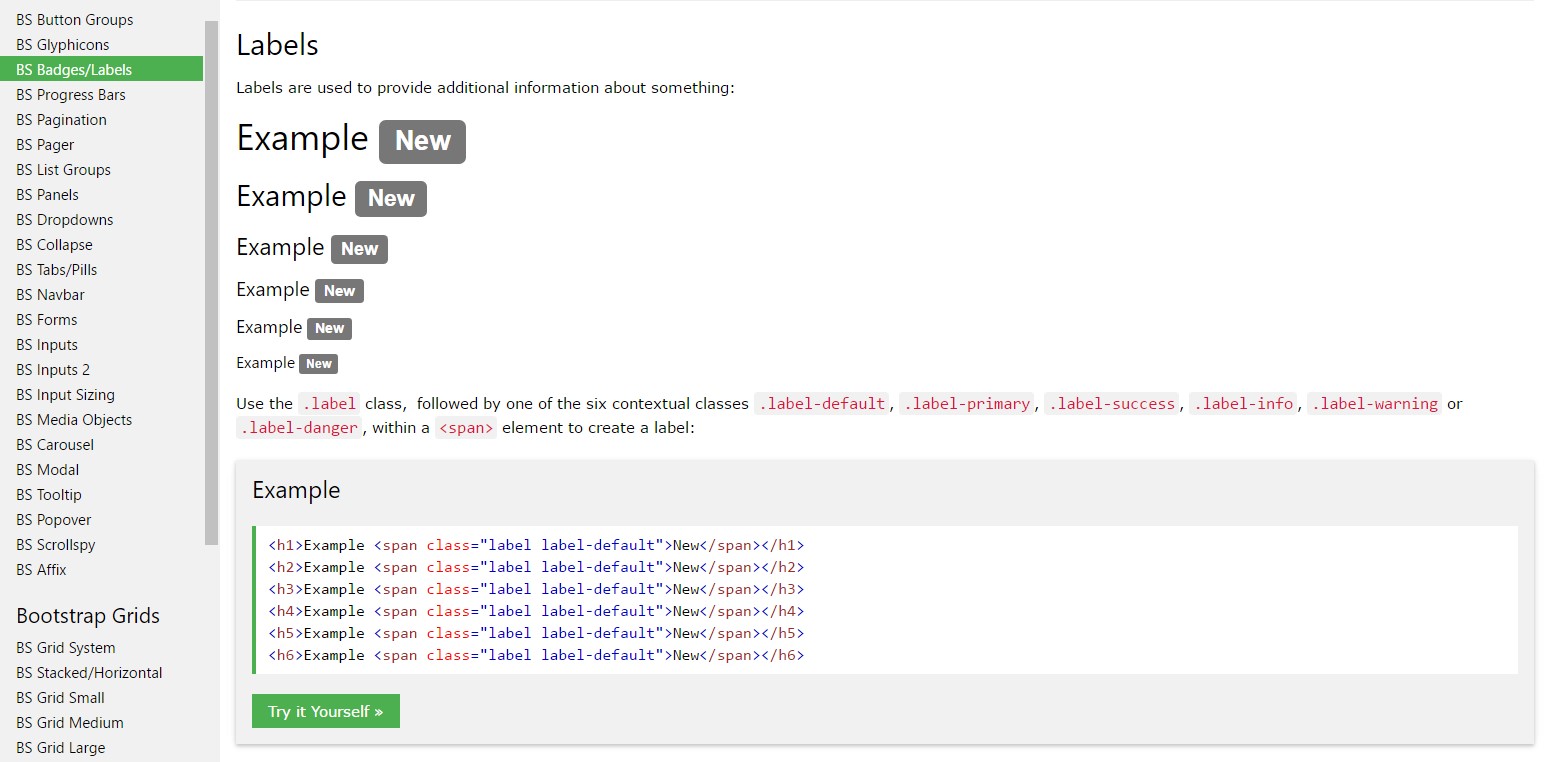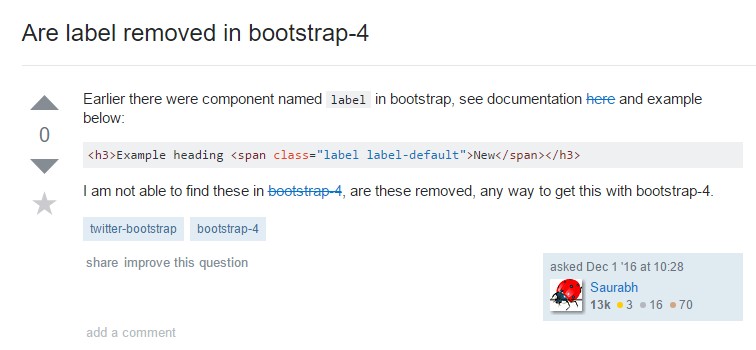Bootstrap Label Class
Introduction
As explained earlier, located in the web pages which we are creating, we often really need including simple or more tricky forms to ask the site visitor for a viewpoint, feedback, certain private information or perhaps preferences. We handle that providing the correct regulations inside our forms carefully taking into account the form construction and the specific commands that really should be utilized regarding the info we require and the particular circumstance included-- like we can't have an order for a single colored phone case that is both white and blue , an individual simply cannot be both male and female in gender or else a product need to be followed with multiple extras which do not omit each other so clicking on each must add it not excluding the others currently chosen. Occasionally, surely, we do desire a precise e-mail supplied or else a phone number that in turn requires the input that must follow specific format just to be proper and surely at particular circumstances we just need website visitor's thoughts on a subject the manner they sense it-- in their very own words.
For each of these cases we utilize the appropriate regulations-- like radio switches, checkboxes, input fields, text message area components and so on still there is an necessary element bound each of these kinds of sectors that helps make our forms simply readable and pleasant for the visitor to navigate through knowing in all times what is definitely required and easily handling even the small-sized commands like radio buttons and checkboxes. Most especially in these days when the web changes into more mobile by having pages shown on various small sized displays this element is significant in granting productiveness and speed in filling in our form.This element is a Bootstrap Label Text.
The way to utilize the Bootstrap Label Input:
What so far has been claimed concerns the <label> element which is fully maintained inside the last edition of one of the most prominent mobile friendly framework-- Bootstrap 4. The <label> element does not actually stand out with attractive look or else several capabilities but it performs the probably most necessary purpose in our forms-- lets the customers understand what communicating using a specific form control will lead to and including some clickable area for turning on the control in itself which in the event of small-sized controls like radio or checkboxes and mobile device displays is important.
The construction is really easy-- simply place a <label> element in your markup attaching it the for =" ~ labeled form control ID ~ " attribute and create the suitable text you want to be presented within it. The for="" attribute says the internet browser what form regulation in order to get activated in case the visitor clicks on the <label> component and can surely be taken out maintaining the very same behaviour if you simply wrap the wanted regulation in the <label> itself.
Nevertheless wrapping form commands inside labels is rather difficulting the code and it is really much better to leave out it-- also utilizing the for ="" attribute you acquire some independence in building your form's design so it's the much better approach to go for.
Together with simple message in the <label> you can in addition set some easy HTML tags such as a heading or a small part perhaps-- that is really not a usual situation yet is feasible and of course it all depends on the special purpose of the form you are actually facing.
Example of form without label
Should you have no text inside the <label>, the input is located as you would definitely look for. Currently simply functions on non-inline checkboxes and radios. Don't forget to currently give some form of Bootstrap Label Example for assistive technologies ( for example, employing aria-label).

<div class="form-check">
<label class="form-check-label">
<input class="form-check-input" type="checkbox" id="blankCheckbox" value="option1" aria-label="...">
</label>
</div>
<div class="form-check">
<label class="form-check-label">
<input class="form-check-input" type="radio" name="blankRadio" id="blankRadio1" value="option1" aria-label="...">
</label>
</div>Interesting item to keep in mind
Interesting aspect to bear in mind with regards to labels in Bootstrap 4 in case that in the current version of the framework this form of component's styling has been modified a little. The <label> components now are not displayed as inline-block that obtains more desirable versatility inside arrangement enabling some margins to be set up.
Conclusions
So now you realise just what the # elements are for and how they function in Bootstrap 4-- all that's left is thinking of the most suitable form areas you ought to attach them to.
Look at several online video information about Bootstrap label
Linked topics:
Operation of the label in in Bootstrap Forms: formal documents

Bootstrap label short training

Getting rid of label in Bootstrap 4
